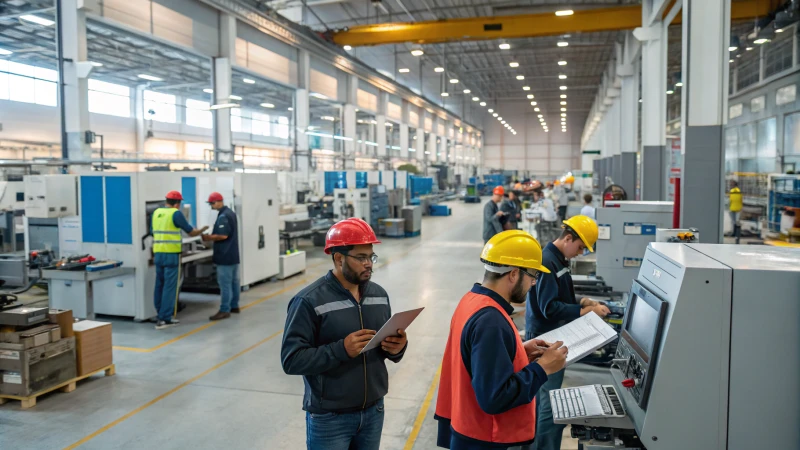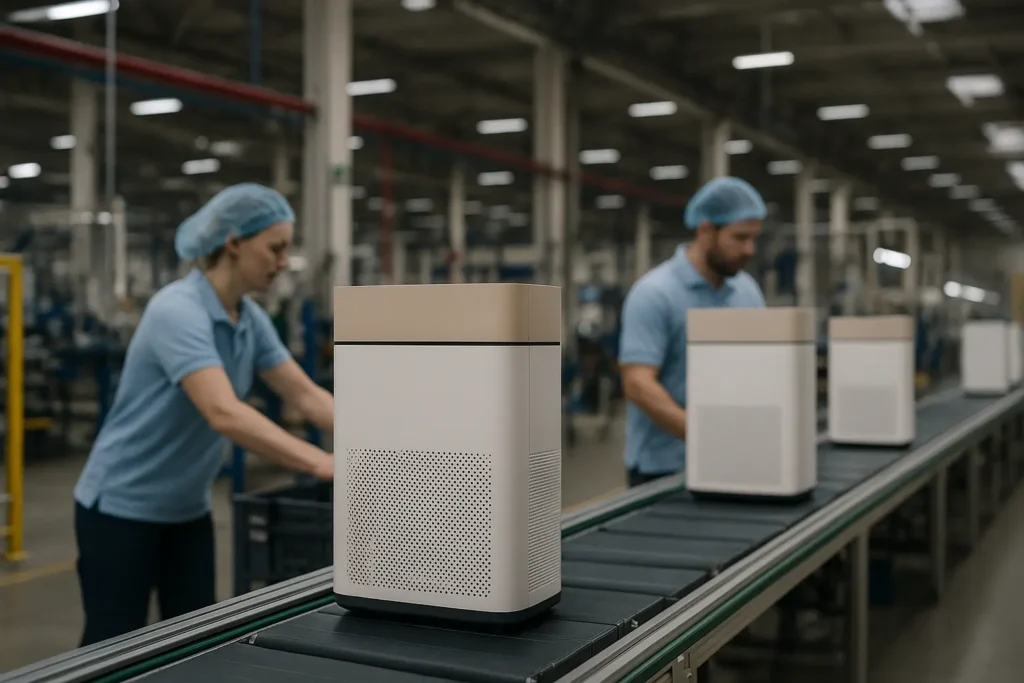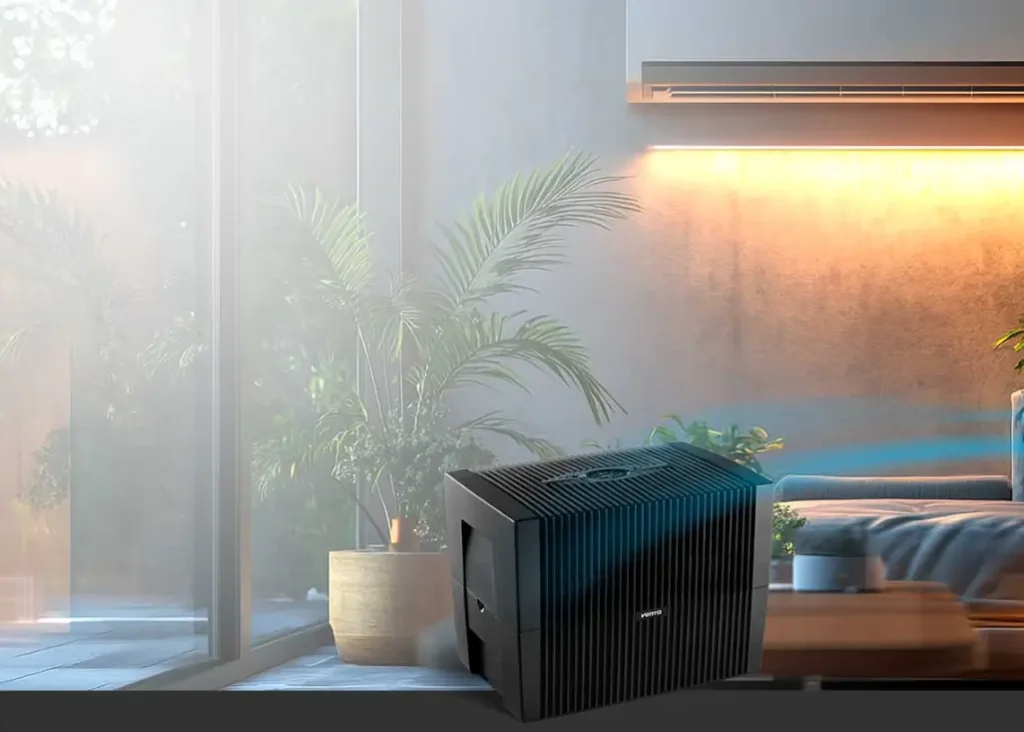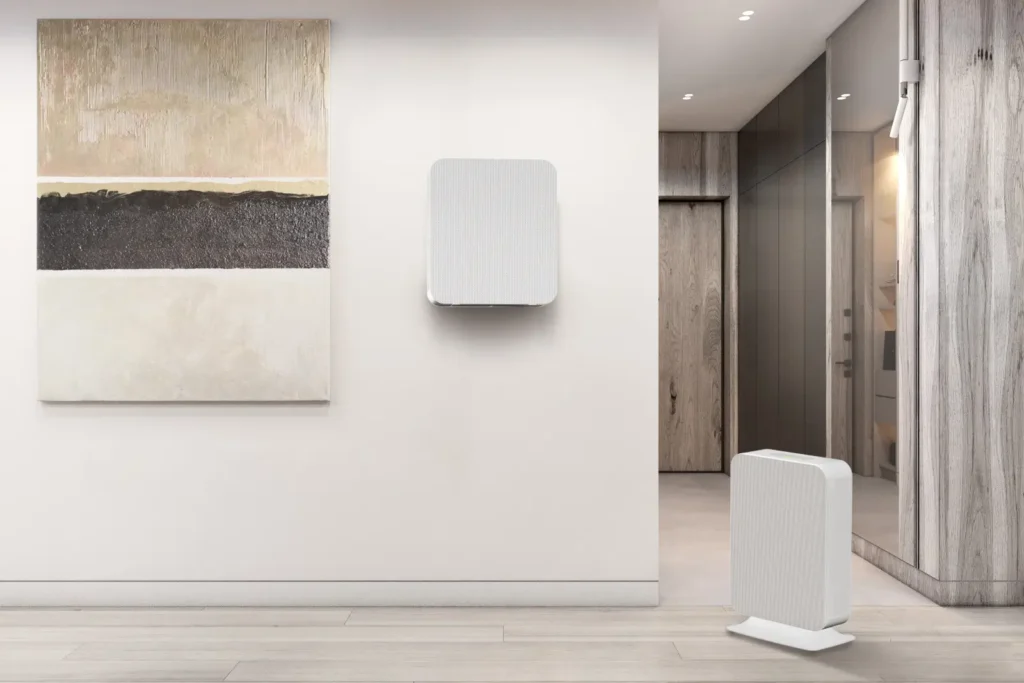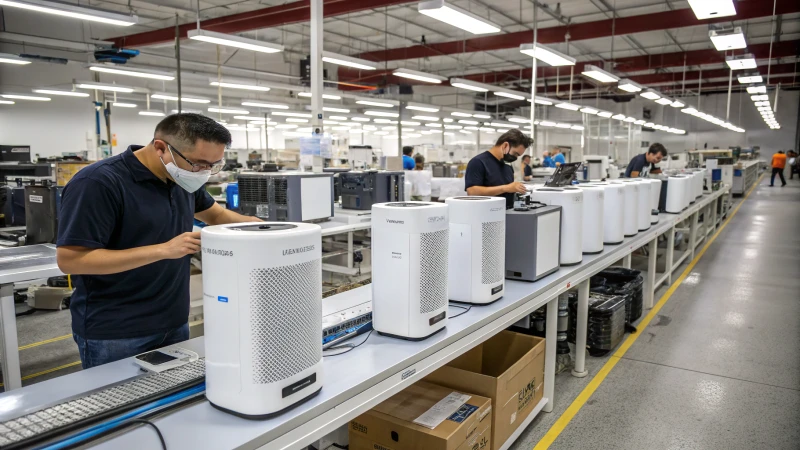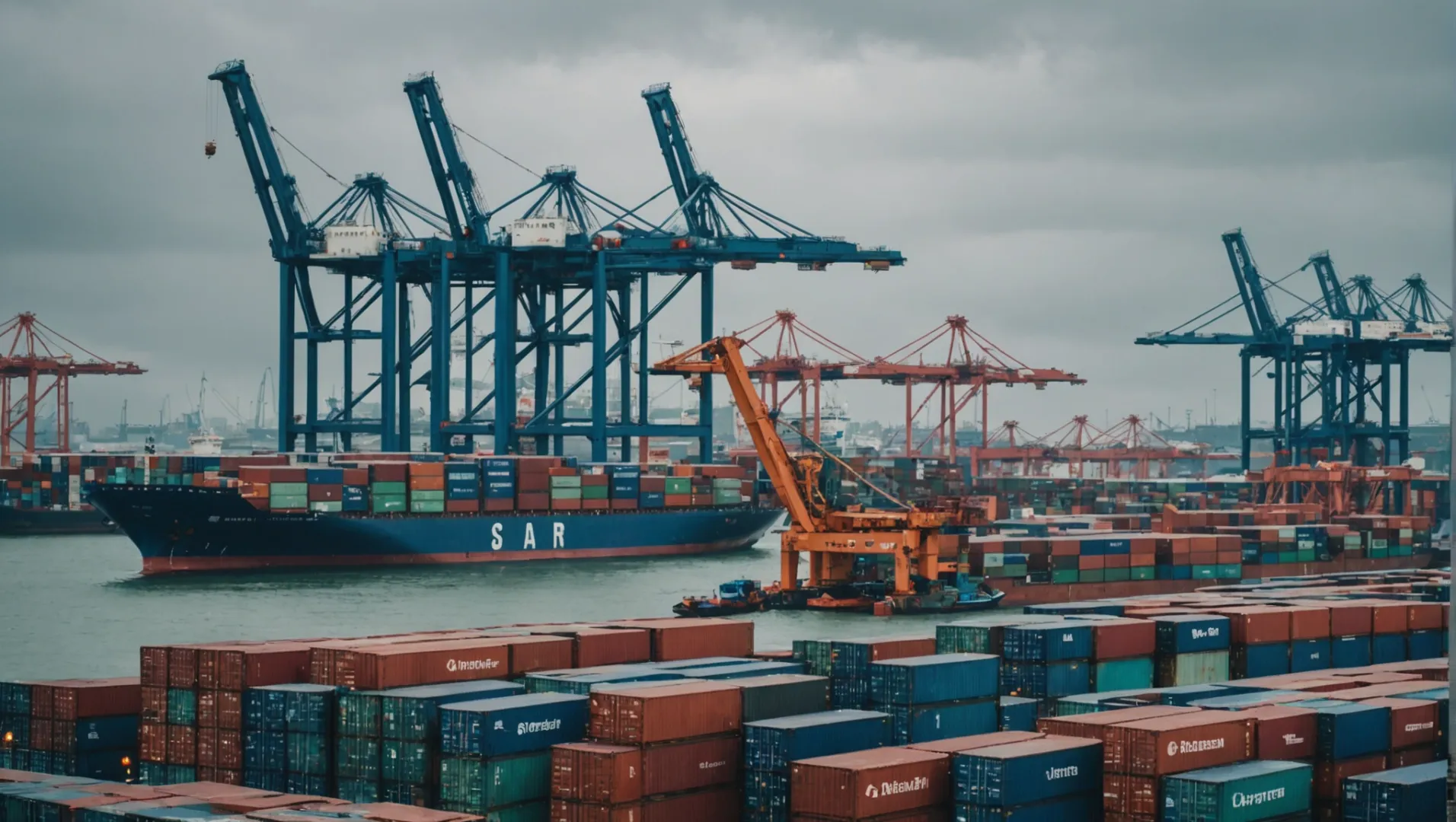
관세를 이해하는 것은 특히 건강과 환경에 영향을 미치는 경우 비밀 언어를 해독하는 것처럼 느껴질 수 있습니다.
중국에서 미국으로 수입되는 공기청정기에 대한 관세가 인상되면 수입업체와 소비자의 비용 상승으로 이어질 수 있습니다. 현재 관세가 25%에 달하고 잠재적 인상이 임박한 상황에서 기업은 영향을 완화하기 위해 생산 위치 및 가격 전략을 결정해야 합니다.
하지만 이 이야기에는 단순한 숫자 이상의 의미가 있습니다. 이러한 관세가 비용뿐만 아니라 공기청정기 수입의 전체 환경을 어떻게 형성하는지 자세히 살펴 보겠습니다.
현재 중국에서 미국으로 수출되는 공기청정기에 대한 관세는 25%입니다.True
현재 중국에서 미국으로 공기청정기를 수입할 때 적용되는 관세율은 25%로 설정되어 있습니다.
현재 공기청정기의 관세율은 얼마인가요?
공기청정기의 관세율은 미국 시장에서의 최종 가격에 영향을 미치는 핵심 요소입니다.
현재 중국에서 미국으로 수입되는 공기청정기는 2025년 5월까지 면제가 적용되지만 25%의 관세가 부과됩니다. 향후 변화가 이 관세율에 더 영향을 미칠 수 있습니다.
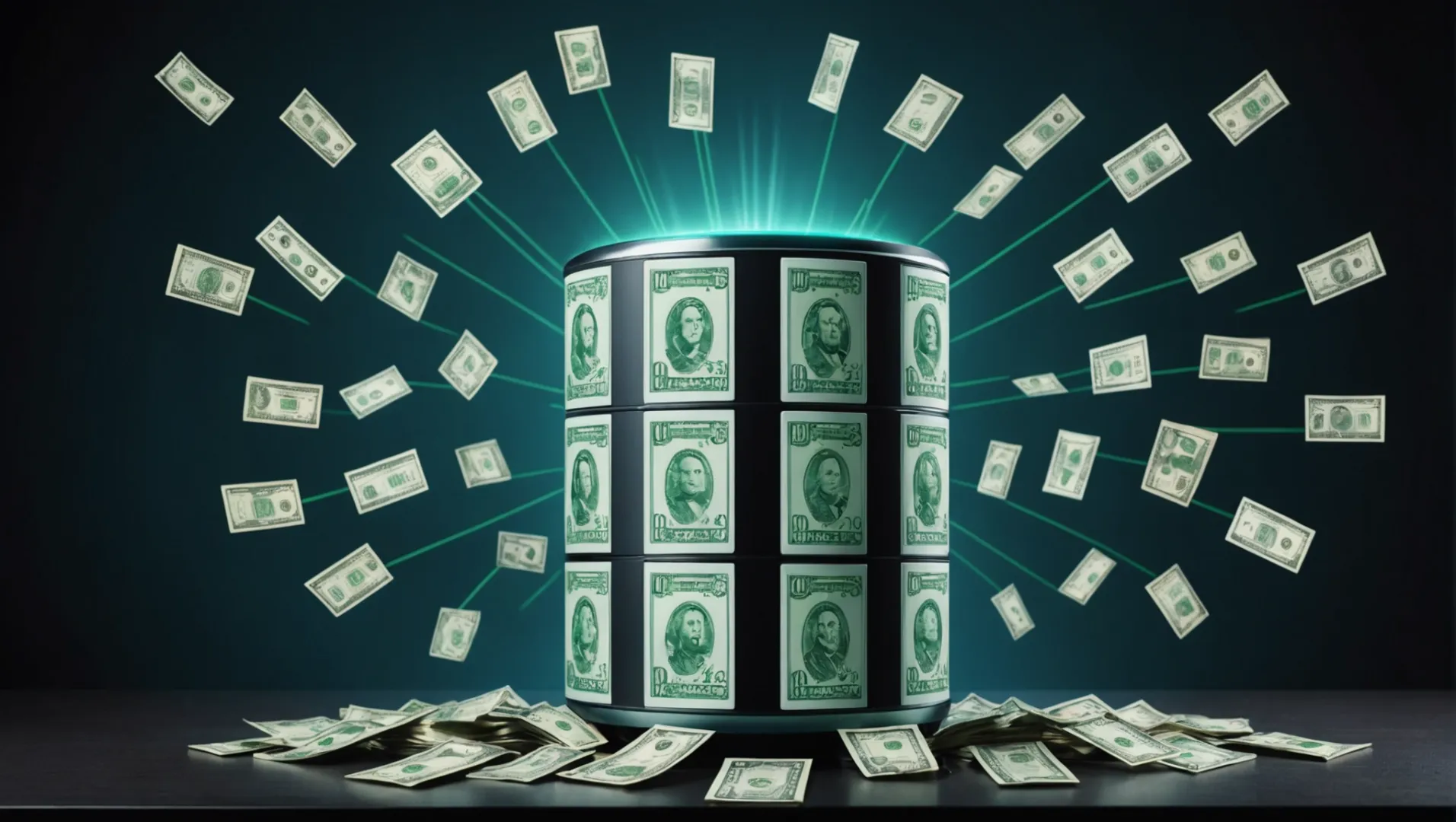
현재 관세 구조 이해하기
최근 몇 년 동안 공기청정기에 대한 관세 환경이 크게 변화했습니다. 현재 중국에서 미국으로 수입되는 공기청정기는 25%의 관세가 부과됩니다. 이 관세율은 무역 불균형을 해소하기 위한 광범위한 무역 조치의 일환으로 도입되었으며 다양한 글로벌 경제 변화에도 불구하고 지속되고 있습니다.
하지만 이러한 관세가 고정된 것이 아니라는 점에 유의해야 합니다. 미국 정부는 현재 2025년 5월까지 한시적인 면제를 허용했습니다. 이러한 면제를 통해 수입업체는 관세를 변경할 수 있는 잠재적인 정치적 변화를 주시하면서 가격 및 소싱 전략을 수립할 수 있습니다.
향후 관세율의 잠재적 변동 가능성
정치 리더십과 무역 정책의 잠재적 변화로 인해 향후 관세율을 둘러싼 불확실성이 존재합니다. 예를 들어, 특정 정치적 상황이 발생할 경우 60%로 대폭 인상될 것이라는 추측이 제기되고 있습니다. 이러한 변화로 인해 제조업체는 중국에서 베트남, 태국 또는 멕시코와 같은 국가로 생산을 이전해야 할 수도 있으며, 이 경우 막대한 관세를 피할 수 있지만 생산 비용이 10~15% 증가할 수 있습니다.
관세율이 비즈니스 전략에 미치는 영향
공기청정기를 수입하는 기업은 전략을 계획할 때 현재 관세와 향후 잠재적 관세를 모두 고려해야 합니다. 25% 관세가 변경되지 않는다면 많은 제조업체가 생산기지 이전보다는 비용 절감 전략에 집중할 수 있습니다. 여기에는 관세로 인한 추가 비용을 상쇄하기 위해 제조 비용이나 수출 가격을 낮추는 것이 포함될 수 있습니다.
관세 인상은 일반적으로 소매 가격 상승으로 이어지기 때문에 소비자 입장에서는 직접적인 영향이 있습니다. 이는 청정 공기 솔루션에 대한 수요가 급증하는 산불과 같은 사건으로 인해 대기 오염 수준이 급증하지 않는 한 구매를 억제할 수 있습니다.
이러한 역학 관계를 이해하고 향후 관세율 변동 가능성에 대비하는 것은 기업과 소비자 모두에게 매우 중요하며, 이를 통해 끊임없이 변화하는 글로벌 시장에서 경쟁력을 유지하고 정보를 확보할 수 있습니다.
중국산 공기청정기에는 미국 관세 25%가 부과됩니다.True
현재 중국에서 미국으로 수입되는 공기청정기에는 25%의 관세가 부과됩니다.
미국의 공기청정기에 대한 관세는 2025년에 60%로 인상될 예정입니다.False
60% 관세는 투기적이며 정치적 변화에 따라 변동될 수 있습니다.
향후 관세 인상이 생산지에 어떤 영향을 미칠 수 있나요?
글로벌 무역 정책이 변화함에 따라 제조업체는 경쟁력을 유지하기 위해 생산 위치를 재평가해야 할 수 있습니다.
향후 관세 인상은 제조업체들이 무역 장벽이 낮은 국가로 생산을 이전하도록 유도하여 운영 비용과 공급망 역학 관계에 영향을 미칠 수 있습니다.
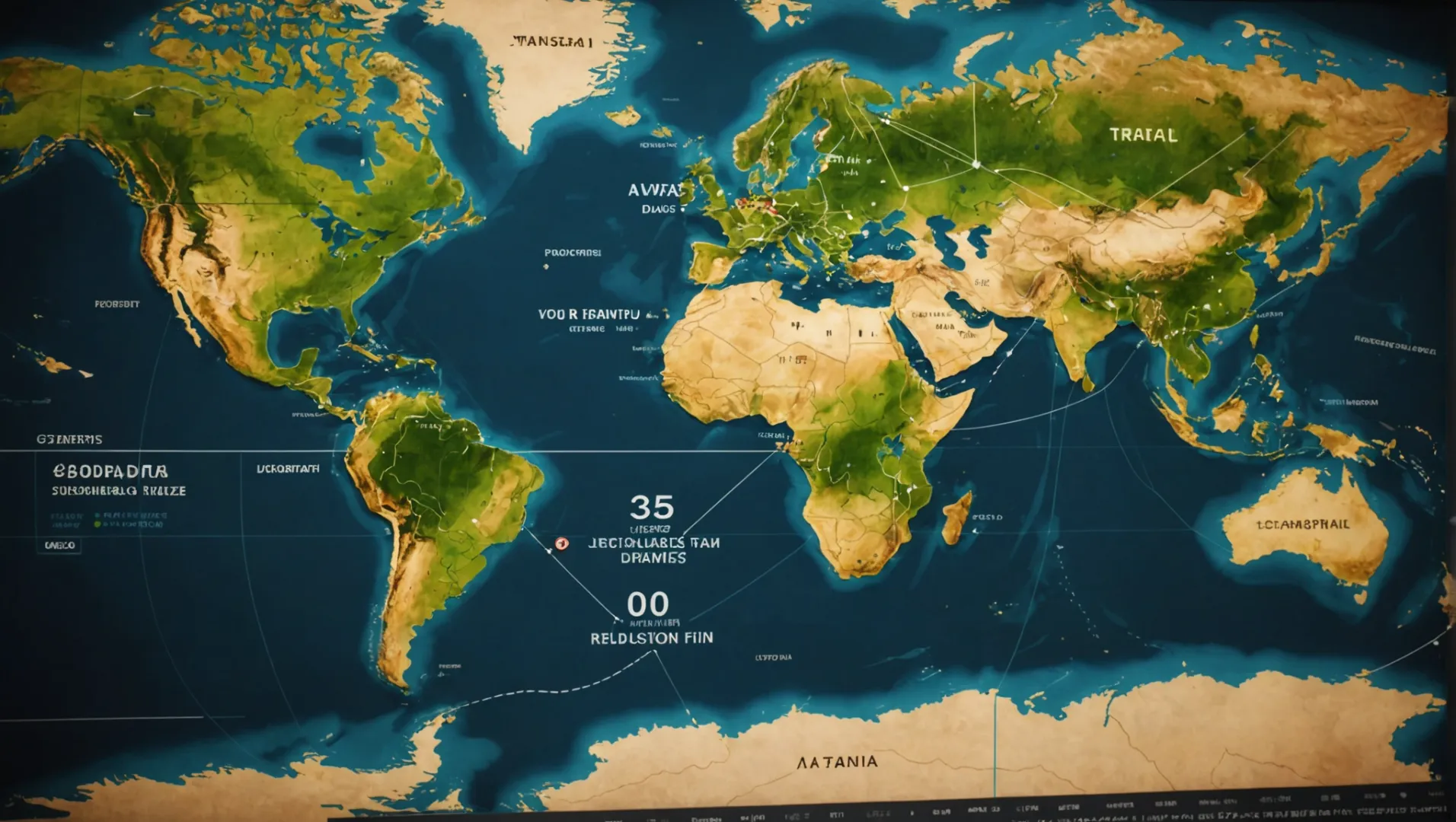
제조 결정에 미치는 관세의 영향
관세는 특정 지역의 경제성을 떨어뜨려 글로벌 제조업의 지형을 크게 변화시킬 수 있습니다. 예를 들어 중국에서 수입되는 공기청정기에 대한 관세가 현행 25%에서 60%로 인상되면 많은 제조업체가 베트남, 태국 또는 멕시코와 같은 국가로 생산 시설 이전을 고려할 수 있습니다. 이러한 국가는 미국과의 무역 장벽이 낮은 경우가 많기 때문에 제조 비용이 10~15% 증가하더라도 전체 비용을 절감할 수 있습니다.
잠재적 재배치 대상
이전은 간단한 결정이 아닙니다. 동남아시아 국가로의 이전은 관세 인하와 같은 혜택을 제공하지만, 인력 가용성, 인프라 품질, 정치적 안정성과 같은 요소도 평가해야 합니다. 베트남과 태국과 같은 국가는 성장하는 제조업과 유리한 무역 협정으로 인해 매력적입니다. 그러나 각각에는 기업이 진출하기 전에 철저히 고려해야 할 고유한 과제가 있습니다.
제조 비용 비교 분석
| 국가 | 예상 제조 비용 증가 | 관세 절감 잠재력 |
|---|---|---|
| 중국 | 0% | 0% |
| 베트남 | 10-15% | 최대 40% |
| 태국 | 10-15% | 최대 40% |
| 멕시코 | 15-20% | 중요 |
이전을 넘어선 전략적 적응
생산지를 변경하는 것 외에도 기업은 관세 인상에 대처하기 위해 다양한 전략을 채택할 수 있습니다. 일부는 제품의 수출 가격을 낮춰 최종 가격에 미치는 관세의 영향을 효과적으로 줄일 수 있습니다. 또 다른 기업은 추가 비용의 일부를 흡수하기 위해 기존 위치의 효율성을 높이는 데 집중할 수 있습니다. 이러한 전략을 모색하는 것은 예측할 수 없는 무역 환경에서 경쟁력을 유지하는 데 매우 중요합니다.
잠재적인 재배치 전략과 이러한 결정에 영향을 미치는 요인에 대해 자세히 알아보려면 다음 내용을 자세히 설명하는 추가 리소스를 살펴보세요. 관세로 인한 제조 변화1. 이를 통해 글로벌 무역 역학이 산업 전반의 생산 결정을 어떻게 재편하고 있는지에 대한 심층적인 인사이트를 얻을 수 있습니다.
중국 수입품에 대한 관세는 60%로 인상될 수 있습니다.True
문맥상 25%에서 60%로 관세 인상 가능성이 언급되어 있습니다.
베트남으로 생산을 이전하면 비용을 절감할 수 있습니다.False
관세가 인하될 수 있지만 베트남의 제조 비용은 10~151%까지 상승할 수 있습니다.
수입업체는 비용 증가를 완화하기 위해 어떤 전략을 사용할 수 있나요?
수입업체들은 중국산 공기청정기에 대한 관세 인상으로 인해 비용 상승에 직면하고 있습니다. 어떻게 적응할 수 있을까요?
수입업체는 공급망을 다변화하고, 공급업체와 더 나은 조건을 협상하고, 효율성을 위해 기술을 활용함으로써 비용 증가를 완화할 수 있습니다. 대체 제조 위치를 탐색하고 물류를 최적화하는 것도 관세 영향을 효과적으로 관리하는 데 도움이 됩니다.

공급망 다각화
수입업체가 비용 증가를 완화할 수 있는 가장 효과적인 전략 중 하나는 공급망을 다변화하는 것입니다. 즉, 한 국가나 공급업체에만 제품을 의존하지 않는 것입니다. 기준 자재 소싱2 다른 지역의 상품에 부과되는 관세로 인해 기업이 큰 영향을 받는 것을 피할 수 있습니다.
예를 들어, 중국산 공기청정기에 대한 관세가 크게 인상되면 수입업체는 생산 비용이 여전히 경쟁력 있는 베트남이나 태국과 같은 다른 아시아 국가에서 부품을 조달하는 것을 고려할 수 있습니다.
더 나은 조건 협상
더 나은 조건을 확보하기 위해 기존 공급업체와 협상에 참여하는 것도 실행 가능한 접근 방식 중 하나입니다. 수입업체는 공급업체와 대량 할인, 결제 기간 연장, 관세 비용 부담 분담 등의 옵션을 논의할 수 있습니다. 효과적인 협상을 통해 상당한 비용을 절감하고 관세 인상의 즉각적인 영향을 줄일 수 있습니다.
기술 활용
물류와 운영에 기술을 접목하면 상당한 비용 절감 효과를 얻을 수 있습니다. 예를 들어, 공급망 관리 소프트웨어를 사용하면 재고 관리를 개선하고 리드 타임을 단축하며 예측 정확도를 높일 수 있습니다. 이러한 개선은 관세 인상과 관련된 비용의 일부를 상쇄할 수 있습니다.
또한 다음과 같은 디지털 도구를 채택하면 자동화된 구매3 프로세스 또는 고급 분석을 통해 기업은 정보에 기반한 의사결정을 내리고 운영을 간소화할 수 있습니다.
대체 제조 위치 탐색
관세가 60%까지 인상될 가능성이 있는 만큼 많은 공기청정기 제조업체는 생산 시설 이전을 고려할 수 있습니다. 베트남, 태국, 캄보디아 또는 멕시코와 같은 국가로 생산 시설을 이전하면 생산 비용이 약간 증가하더라도 관세율이 낮아지고 전체 비용을 절감할 수 있습니다.
| 국가 | 예상 관세 절감액 | 예상 생산 비용 증가 |
|---|---|---|
| 베트남 | 최대 30% | 10-15% |
| 태국 | 최대 25% | 10-15% |
| 멕시코 | 최대 35% | 10-15% |
물류 최적화
물류는 비용 관리에 중요한 역할을 합니다. 수입업체는 운송 비용을 줄이기 위해 물류 네트워크를 평가하고 최적화해야 합니다. 여기에는 배송 통합, 더 효율적인 경로 선택, 물류 제공업체와 더 나은 요금 협상 등이 포함될 수 있습니다.
결론
수입업체는 이러한 전략을 조합하여 구현함으로써 중국산 공기청정기에 대한 관세 인상으로 인한 어려움을 더 잘 헤쳐나갈 수 있습니다. 각 전략에는 고유한 이점이 있지만, 핵심은 비즈니스의 특정 요구 사항과 시장 상황에 가장 적합한 조합을 평가하는 데 있습니다.
공급망을 다각화하면 관세 영향을 줄일 수 있습니다.True
여러 지역에서 소싱하면 한 국가에 대한 의존도가 높아지는 것을 방지할 수 있습니다.
제조를 이전하면 전체 비용이 20% 증가합니다.False
이전하면 관세를 줄일 수 있지만 생산 비용은 약간만 증가합니다.
관세가 소비자 가격 및 수요에 어떤 영향을 미치나요?
관세는 소비자 가격을 크게 좌우하여 수요와 더 광범위한 경제 역학에 영향을 미칠 수 있습니다.
관세는 일반적으로 소비자 물가 상승으로 이어져 상품 가격이 높아짐에 따라 수요가 감소합니다. 이러한 가격 인상은 필수 상품과 비필수 상품 모두에 영향을 미쳐 소비자의 구매 행동을 변화시키고 잠재적으로 경제 성장을 저해할 수 있습니다.
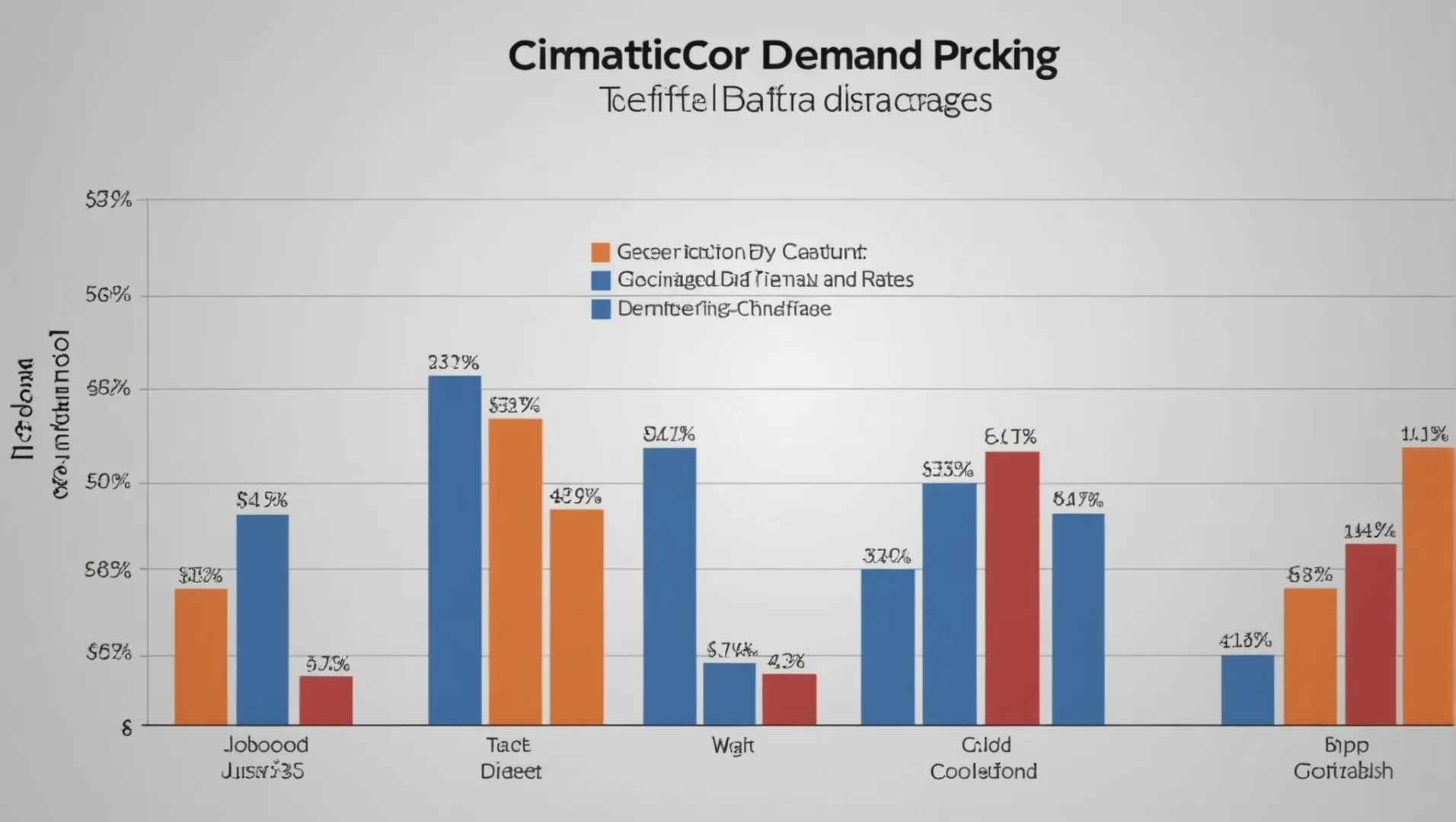
소비자 가격에 미치는 직접적인 영향
수입품에 관세가 부과되면 즉각적인 효과는 소비자 가격 인상으로 이어집니다. 예를 들어 중국에서 수입되는 공기청정기의 관세가 25%로 설정되면 이 비용이 소비자에게 전가되어 소매 가격이 상승하는 경우가 많습니다. 그러면 소비자는 이러한 추가 비용을 흡수하거나 대안을 찾아야 하는 딜레마에 직면할 수 있습니다.
경우에 따라 기업은 가격 경쟁력을 유지하기 위해 관세의 일부를 흡수하려고 시도할 수 있습니다. 그러나 이는 수익 마진을 압박할 수 있으며, 이로 인해 기업들은 비용을 상쇄하는 방법4 효율성 개선 또는 생산 위치 이동을 통해 비용을 절감할 수 있습니다.
소비자 수요의 변화
일반적으로 가격이 높아지면 특히 명품과 같은 비필수품의 경우 수요가 감소합니다. 공기청정기의 경우, 일부 소비자는 건강에 대한 우려로 기꺼이 더 많은 비용을 지불할 수 있지만, 다른 소비자는 구매를 미루거나 아예 포기할 수도 있습니다.
표를 통해 다양한 관세율이 소비자 가격에 어떤 영향을 미치는지 설명할 수 있습니다:
| 관세율 | 소매 가격 인상 | 예상되는 수요 변화 |
|---|---|---|
| 25% | 15-20% | 보통 감소 |
| 60% | 30-40% | 대폭 감소 |
더 광범위한 경제적 영향
관세는 개별 제품에만 영향을 미치는 것이 아니라 경제 전반에 걸쳐 파급 효과를 가져옵니다. 물가 상승은 인플레이션 압력으로 이어져 중앙은행이 통화 정책을 조정하도록 유도할 수 있습니다. 또한, 수요 감소는 영향을 받는 수입품에 의존하는 산업에서 생산량 감소와 잠재적인 일자리 감소로 이어질 수 있습니다.
또한 세계화된 경제에서 관세 인상은 다음과 같은 결과를 초래할 수 있습니다. 지정학적 긴장5 각국이 관세로 보복하면서 국제 관계와 경제 안정을 해칠 수 있는 무역 전쟁 시나리오가 만들어지고 있습니다.
궁극적으로 관세는 국내 산업을 보호하고 정부 수입을 창출하는 도구이지만, 소비자 가격 및 수요에 미치는 영향은 심오하고 복잡합니다. 이러한 역학 관계를 이해하면 소비자와 기업이 변화하는 관세 환경으로 인해 발생하는 문제를 해결하는 데 도움이 될 수 있습니다.
관세는 항상 소비자 물가 상승으로 이어집니다.True
관세는 수입 비용을 높여 소비자에게 전가되어 가격이 상승하는 경우가 많습니다.
관세가 높으면 비필수품에 대한 수요가 감소합니다.True
관세로 인한 가격 상승은 특히 사치품에 대한 소비자 수요를 감소시킵니다.
결론
이러한 격랑을 헤쳐나감으로써 소비자와 기업 모두 자신의 이익을 보호할 수 있는 정보에 입각한 선택을 할 수 있습니다.
-
관세가 전 세계 공장 이전에 미치는 영향에 대한 인사이트를 얻으세요: 2019년 12월, 연방준비제도이사회 경제학자 Aaron Flaaen과 Justin Pierce는 관세로 인해 제조업 고용이 순 감소했다는 사실을 발견했습니다.... ↩
-
공급망 다각화가 어떻게 위험과 비용을 줄이는지 알아보세요: 이러한 복잡한 공급망 네트워크는 전 세계적으로 안정성과 번영을 높이는 데 기여해 왔습니다. ↩
-
기술이 공급망의 효율성을 향상시키는 방법을 알아보세요: 특수 목적의 지능형 애플리케이션이 점점 더 공급망 기술의 미래를 형성하고 있습니다. ↩
-
기업이 관세로 인한 비용 증가를 관리하는 방법을 살펴보세요: 도널드 트럼프 대통령 당선인의 취임으로 미국에 수입 관세가 다시 부과될 가능성이 높아졌습니다. ↩
-
관세가 국제 무역 역학 관계에 어떤 영향을 미치는지 알아보세요: 관세는 누가 징수하나요? 간단히 말해서 관세는 세금입니다. 관세는 수입품 소비자가 부담하는 비용에 추가되며 여러 무역 중 하나입니다. ↩


